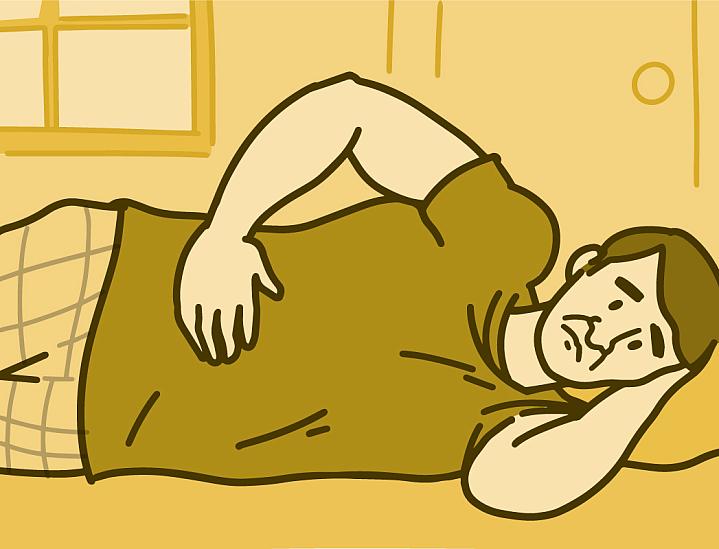Appendix Pain
Preventing Appendicitis Complications

The appendix is a finger-like pouch that branches off from your large intestine. No one is sure what it does or why it evolved. But when something goes wrong, it can be dangerous.
“We do know that it causes problems,” says Dr. Nicole Wilson, a pediatric surgeon at the University of Rochester. “And we do know that people do just fine without it.”
Some studies suggest that your appendix may help your body’s disease defenses, or immune system. But some people get appendicitis, or inflammationHeat, swelling, and redness caused by the body’s protective response to injury or infection. of the appendix. This can happen for different reasons. Sometimes the tiny opening that leads from the appendix to the large intestine gets blocked by stool. Other times an infection can be the cause. Swelling from inflammation can lead to pain in your abdomen, the cavity that holds your organs.
“The classic symptoms of appendicitis are pain that starts around the belly button and kind of migrates down to the right lower side of the belly,” Wilson explains. Other symptoms include an upset gut, like nausea, vomiting, or not wanting to eat. Sometimes appendicitis also comes with a fever.
If you have these symptoms, get medical care right away. The sooner appendicitis is caught, the better. You’re less likely to have complications like a perforated, or “burst,” appendix. This is when a hole forms in your appendix. The hole lets bacteria leak into your abdomen, which can be life threatening.
Doctors diagnose appendicitis based on symptoms and lab and imaging tests. Treatment depends on the severity of inflammation and whether your appendix has burst. You may only need antibiotics. But often, patients require both surgery and antibiotics. If your appendix bursts, you’ll need surgery.
Patients with a perforated appendix are at risk for getting an abscess, Wilson says. This is a pocket of pus that forms within the abdomen. People who get these internal infections are usually hospitalized. They’re given IV antibiotics for days or weeks.
Wilson’s research focuses on a new way to prevent infections from a perforated appendix. It’s called photo-dynamic therapy, or PDT. The technique uses laser light and a light-reactive dye. When combined, they produce molecules that cause bacteria to burst open and die. Surgeons might use the technique to sterilize the abdomen after removing the appendix.
With antibiotics alone, some bacteria can survive. They can develop resistance to the drugs. But PDT kills all the bacteria. Wilson and her colleague, Dr. Timothy Baran, are testing PDT in animal models and on bacteria collected from patients with perforated appendicitis.
Baran’s work has already shown that the technique can be used to treat abscesses in people. Now, Wilson and Baran are testing whether PDT can be used to prevent and treat internal infections.
“For a long time, we’ve treated appendicitis the same way, and this is one of the first studies that I know of looking at new and innovative ways to add to the treatment of it,” Wilson says. “It’s probably years down the road, but I’m really excited about it.”
NIH Office of Communications and Public Liaison
Building 31, Room 5B52
Bethesda, MD 20892-2094
nihnewsinhealth@od.nih.gov
Tel: 301-451-8224
Editor: Harrison Wein, Ph.D.
Managing Editor: Tianna Hicklin, Ph.D.
Illustrator: Alan Defibaugh
Attention Editors: Reprint our articles and illustrations in your own publication. Our material is not copyrighted. Please acknowledge NIH News in Health as the source and send us a copy.
For more consumer health news and information, visit health.nih.gov.
For wellness toolkits, visit www.nih.gov/wellnesstoolkits.



